 The 10th INFORMS Telecommunications Conference
The 10th INFORMS Telecommunications Conference
Concordia University, May 5 - 7, 2010
INFORMS Telecom
Concordia University, 5 — 7 May 2010
 |
Antonio Capone is an Associate Professor at the Information and Communication Technology Department (Dipartimento di Elettronica e Informazione) of the Technical University of Milan (Politecnico di Milano), where he is the director of the Advanced Network Technologies Laboratory (ANTLab). Dr. Capone is co-founder and CTO of MobiMESH, a spin-off company of Politecnico di Milano. His expertise is on networking and his main research activities include protocol design (MAC and routing) and performance evaluation of wireless access and multi-hop networks, traffic management and quality of service issues in IP networks, and network planning and optimization. On these topics he has published more than 140 peer-reviewed papers in international journal and conference proceedings. He received the M.S. and Ph.D. degrees in electrical engineering from the Politecnico di Milano in 1994 and 1998, respectively. In 2000 he was visiting professor at UCLA, Computer Science department. He currently serves as editor of Wireless Communications and Mobile Computing (Wiley), Computer Networks (Elsevier), and Computer Communications (Elsevier). He was guest editor of a few journal special issues and served in the technical program committee of major international conferences (including Mobicom, INFOCOM, SECON, MASS, Globecom, ICC, LCN, Networking, WoWMoM), as Technical Program Chair of Ifip MEDHOCNET 2006, Poster&Demo co-chair of SECON 2009, Workshop chair of INFOCOM 2010, and publicity chair of MOBIQUITOUS 2007. He is currently involved in the scientific and technical activities of several national and European research projects, and he leads several industrial projects. He is a Senior Member of the IEEE.
Conference title : From Pre-Planned to Self-Organizing and Green Wireless Networks
Abstract: In the last couple of decades wireless access networks, and cellular system in particular, have rapidly pervaded everyday life. The number of mobile subscribers worldwide overcame the number of fixed lines in 2002 and it is now more than triple. This rapid chance required enormous investments by mobile operators that have deployed full coverage networks in most countries (including development countries). Obviously the need to minimize installation and operation costs of wireless access networks has stimulated the research community to develop design tools based on optimization technologies for supporting planning and management decisions of mobile operators. These include radio planning tools for the deployment of new networks or the expansion of existing ones, as well as tools for network management like those for frequency and resource assignment.
Even if now mobile phone services are available basically worldwide, the effort to deploy wireless access networks is still continuing and a new wave of change is expected with the diffusion of broadband mobile Internet access of new generation systems. Two main issues must be addressed in the next years. On one side the increasing energy consumption of wireless networks asks for energy aware design and management tools. On the other side, the increased complexity of wireless technologies, the larger number of access stations required, and the difficulties to get reliable estimates of signal propagation in real environments ask for new distributed algorithms for network optimization. We expect that next generation wireless networks are able to self-configure and self-optimize, as well as to reduce energy consumption based on traffic loads.
In this keynote we overview the new challenges arising in optimizing design and management of new generation wireless network highlighting the research and application opportunities for optimization researchers and practitioners.
Martin Groetschel, Technische Universität Berlin, Institut für Mathematik | 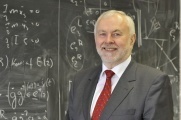 |
Martin Grötschel holds the Chair for Information Technology at the Institute of Mathematics of Technische Universität Berlin and is Vice President of the Konrad-Zuse-Zentrum Berlin (ZIB). From November 2002 till May 2008 he had served as Chair of the DFG Research Center MATHEON "Mathematics for key technologies", a scientific institution involving about 200 applied mathematicians from the three large Berlin universities and two research institutes. Martin Grötschel's main areas of scientific interest are mathematics and operations research. His special focus is on the design of practically efficient algorithms for hard combinatorial optimization problems. He has contributed to application areas such as telecommunication, chip design and very large scale integration, production planning and flexible manufacturing, logistics, and planning of public transportation systems. He has also been leading several projects on electronic information and communication. Grötschel's scientific achievements were honored with several distinctions including the John von Neumann Theory Prize (2006), the EURO Gold Medal (2004), the Leibniz Prize (1995), the Dantzig Prize (1991), the Beckurts Prize (1990), and the Fulkerson Prize (1982). He is a member of the Berlin-Brandenburg Academy of Sciences and Humanities (BBAW), of acatech, the German Academy of Science and Engineering, and of the German Academy of Sciences Leopoldina; he is also a Foreign Associate of the National Academy of Engineering, USA. He received Honorary Doctorates from the Universities of Karlsruhe (2006) and Magdeburg (2008) and the Vietnamese Academy of Science and Technology (2007).Grötschel's scientific achievements were honored with several distinctions including the John von Neumann Theory Prize (2006), the EURO Gold Medal (2004), the Leibniz Prize (1995), the Dantzig Prize (1991), the Beckurts Prize (1990), and the Fulkerson Prize (1982). He is a member of the Berlin-Brandenburg Academy of Sciences and Humanities (BBAW), of acatech, the German Academy of Science and Engineering, and of the German Academy of Sciences Leopoldina; he is also a Foreign Associate of the National Academy of Engineering, USA. He received Honorary Doctorates from the Universities of Karlsruhe (2006) and Magdeburg (2008) and the Vietnamese Academy of Science and Technology (2007). Martin Grötschel has served the academic community in many administrative functions. He was, e.g., on the Executive Committees of the Mathematical Programming Society (MPS) and of the German Mathematical Society (DMV), and in 1993-1994 DMV's President. He has been on the Executive Board of BBAW since 2001 and has acted on scientific advisory boards of various organizations and institutions (FWF-Austrian Science Foundation, University of Vienna, Imperial College London, KTH Stockholm, ILOG, CWI Amsterdam). After having served as a member-at-large of the Executive Committee of the International Mathematical Union (IMU) from 1999 to 2006, Martin Grötschel was elected IMU's Secretary for the period 2007 to 2010.
Conference title : Survivable Multi-Layer Multi-Level Network Design
Abstract : I started addressing mathematical issues of telecommunication network design more than twenty years ago when I collaborated with Clyde Monma at Bell Communications Research. Fiber optic technology started being deployed. Due to the high bandwidth of fiber cables, initial network topologies were very sparse, "tree-like", making these networks vulnerable to disruptions. Survivability, i.e., protection against failures of network components - at least cost, of course - became an important issue. I will survey some of the survivability concepts that arose over time and that have, in the meantime, evolved into very complex mixed integer programming models with which various aspects of protection against failure scenarios can be captured. Examples of solutions of real world network design problems will illustrate the development. The "solution technology" is based on a combination of LP technology, polyhedral combinatorics, and heuristics and can provide today optimal or provably near optimal solutions of large scale network design problems. Integrating all aspects, such as multiple layers and multiple levels, into one MIP model is still a challenge. I will outline the current state of the art of modeling and of solution approaches for such network design tasks.
| 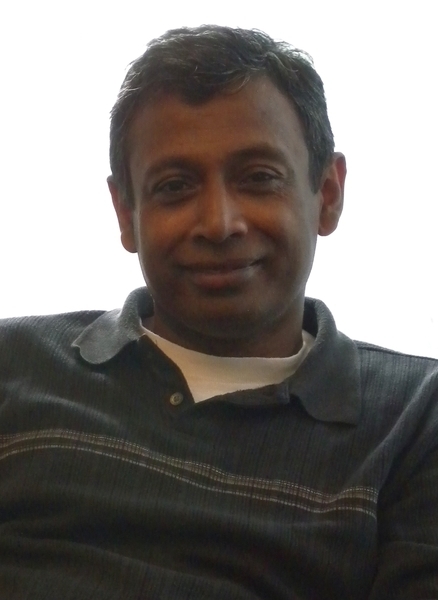 |
Pragasen Pillay has lived, taught and conducted research in South Africa, the USA, the United Kingdom and Canada. His technical contributions in electrical engineering and overall contributions to the field have been recognized through a fellowship with the world's leading professional association for the advancement of technology, the IEEE. Dr. Pillay's work has also been honoured by the President of South Africa, who granted him the Order of Mapungubwe in 2008, in recognition of achievements which served the country's interests while having an international impact.
Conference title : Current Research in Energy Efficiency and Renewable Energy
Abstract: Concordia University and Hydro-Québec have joined forces to establish a new Senior Industrial Research Chair in the broad area of sustainable energy systems. Building on the chairholder's recent efforts in the fields of energy efficiency, renewable energy and machine design, innovative solutions will be developed to increase the electric efficiency of the energy system and contribute to the conservation of non-renewable energy sources. The Chair will further explore sustainable and affordable energy sources suitable for Hydro-Québec customers, such as: biomass, osmosis and small wind. The practical integration of these sources will then be examined at particular customer locations in settings ranging from urban office buildings to rural farms.
Mauricio Resende, AT&T Labs - Research | 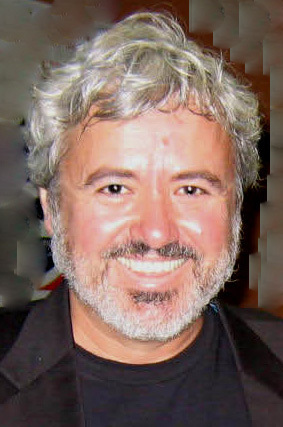 |
Mauricio G. C. Resende is a research scientist at the Algorithms and Optimization Research Department at the AT&T Shannon Laboratory of AT&T Labs Research. His undergraduate studies were in electrical engineering (systems concentration) at the Catholic University of Rio de Janeiro, Brazil and he earned a M.Sc. in operations research at the Georgia Institute of Technology. He has been at AT&T Bell Labs and AT&T Labs Research since 1987, when he earned his Ph.D. in operations research at the University of California, Berkeley. His research has focused on optimization, including interior point algorithms for linear, nonlinear, and network programming, as well as heuristics for discrete optimization problems arising in telecommunications, scheduling, location, assignment, and graph theory. He has published over 100 papers and he is co-editor of five books, including the Handbook of Optimization in Telecommunications and the Handbook of Applied Optimization. He is on the editorial boards of several optimization journals, including Networks, Journal of Heuristics, Journal of Global Optimization, and Computational Optimization and Applications. Besides working in the telecommunications industry, he has worked in the electrical power and semiconductor manufacturing industries.
Conference title : Metaheuristic Solutions to some Combinatorial Optimization Problems Arising in Telecommunications
Abstract: Metaheuristics are high-level procedures that coordinate simple heuristics, such as local search, to find solutions to combinatorial optimization problems that are of better quality than those found by the simple heuristics alone. Biased random-key genetic algorithm is a metaheuristic that is rather straightforward to describe and implement. For many applications, heuristics based on this metaheuristic have been shown to achieve the goal of finding solutions that are of better quality than those found by the simple heuristics that they coordinate. In this talk, we first give a review of biased random-key genetic algorithms.This is followed by several applications of the technique to combinatorial optimization problems that arise in telecommunications. We describe heuristics for routing in IP networks that use the OSPF and DEFT protocols, survivable network design in composite link IP networks where routing is done with OSPF, location of network monitors that are used to estimate packet loss between two edge nodes in an IP network, and routing and wavelength assignment in wavelength division multiplexing optical networks.
George N. Rouskas, Department of Computer Science, North Carolina State University
| 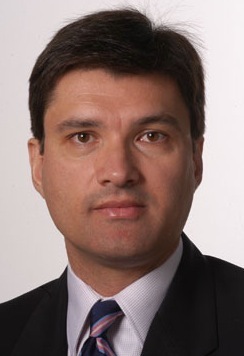 |
George Rouskas is a Professor of Computer Science at North Carolina State University. He received the Ph.D. and MS degrees in Computer Science from the College of Computing, Georgia Institute of Technology, and an undergraduate degree in Computer Engineering from the National Technical University of Athens (NTUA), Athens, Greece. His research interests are in network design and optimization, network architecture, and performance evaluation. He is the author of a book on "Internet Tiered Services" (Springer, 2009), co-editor of the book "Traffic Grooming for Optical Networks" (Springer, 2008), and co-editor of the upcoming book "Next-Generation Internet: Architectures and Protocols" (Cambridge University Press, 2010).
He is a recipient of a 1997 NSF AREER Award, the 2004 ALCOA Foundation Engineering Research Achievement Award and the 2003 NCSU Alumni Outstanding Research Award, and he was inducted in the NCSU Academy of Outstanding Teachers in 2004. He is co-chairing the Optical Networks and Systems Symposium for IEEE Globecom 2010, and he has been involved in the organization of several networking conferences.
Conference title : RWA in WDM Rings: An Efficient ILP Formulation Based on Maximal Independent Set Decomposition
Abstract : With the advances in optical technology, WDM rings are now capable of supporting more than 100 wavelengths in a single fiber. Conventional link and path formulations for the routing and wavelength assignment (RWA) problem are inefficient for such networks due to the inherent symmetry in wavelength assignment and the fact that the problem size, in terms of variables and constraints, increases fast with the number of wavelengths. Although a formulation based on maximal independent sets (MIS) does not have these drawbacks, it suffers from exponential growth in the number of variables with the increasing network size. In this talk, we will revisit the classical RWA problem in ring networks and present a new integer linear programming (ILP) formulation which can be used to obtain optimal results for networks with large numbers of wavelengths. The new approach relies on the idea of partitioning the path set and representing the maximal independent sets in the original network using the independent sets calculated in each of these partitions. The new formulation achieves a much better scalability in terms of network dimension. It is also ``future-proof'' as its size is independent of the number of wavelengths. We will also discuss the impact of incorporating this formulation in more complex design problems such as traffic grooming, as well as extensions to optical networks of arbitrary topology.
| Dominic Schupke, Multi-Layer Networks and Resilience, Nokia Siemens Networks GmbH & co., KG | 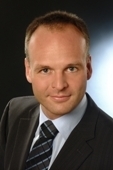 |
Dominic A. Schupke received his Dipl.-Ing. degree from RWTH Aachen in 1998 and his Dr.-Ing. degree from Munich University of Technology (TUM) in 2004. He is with Nokia Siemens Networks (NSN) in Munich, Germany and manages the Multi-Layer Networks and Resilience Group in NSN's research unit. Prior to NSN he was with Siemens and the Institute of Communication Networks at TUM. Since March 2009 he has instructed the course "Network Planning" at TUM. His research interests are in the area of transport networks. This includes network architectures and protocols (optical networks, IP/MPLS networks, Ethernet networks, multilayer networks), routing and wavelength assignment, recovery methods, availability analysis, critical infrastructures, network optimization, and network planning. He is author or co-author of more than 15 journal contributions and over 50 conference papers. Dominic has been technical program committee member for IEEE conferences Globecom, ICC, and INFOCOM, as well as for OFC, DRCN, and ONDM. Since March 2007 he has served as Associate Editor of the OSA Journal of Optical Networking, which by now became IEEE/OSA Journal of Optical Communications and Networking.
Conference title : Integrating Electrical and Optical Networks
Abstract : Multi-layer networking enables cost-efficient backbone solutions, meeting high availability requirements. Advanced techniques optimizing the interaction between network layers are needed, particularly to accommodate novel approaches to homing architectures, virtualization, flexible control planes, network coding for resilience, and efficient energy consumption. The presentation summarizes recent research results in the area.
